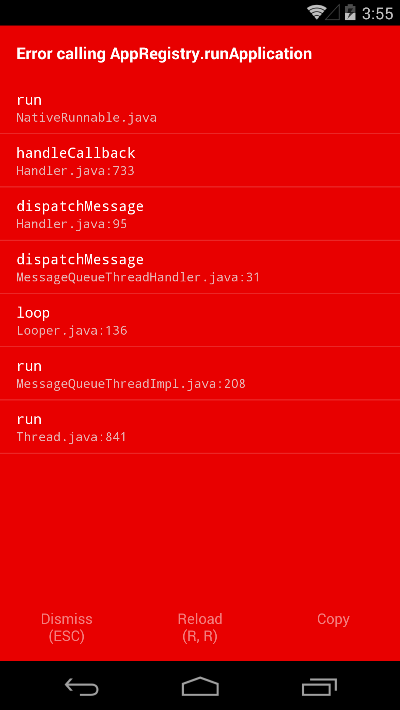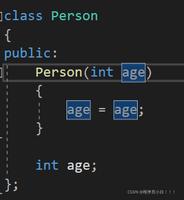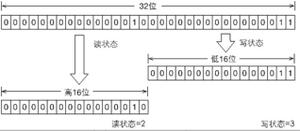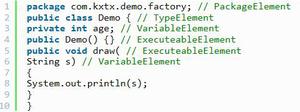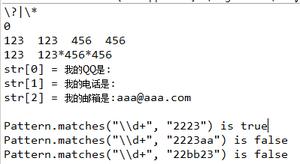ES6 详解之模拟 Set 实现
基本介绍
ES6 提供了新的数据结构 Set。
它类似于数组,但是成员的值都是唯一的,没有重复的值。
初始化
Set 本身是一个构造函数,用来生成 Set 数据结构。
let set = new Set();Set 函数可以接受一个数组(或者具有 iterable 接口的其他数据结构)作为参数,用来初始化。
let set = new Set([1,2,3,4,5,6,7,8,7]);console.log(set); //{1,2,3,4,5,6,7,8}
set = new Set(document.querySelectorAll('div'));
console.log(set.size); //66
set = new Set([1,3,4,3,4,5,6,7,8]);
console.log(set.size); // 7
注意:set 的 size 属性只输出过滤掉的不重复的数量
属性和方法
操作的方法有 a
- 1.add(value):添加某个值,返回 Set 结构本身,可以连式编程.
- 2.delete(value):删除某个值,返回一个布尔值,表示删除是否成功。
- 3.has(value):返回一个布尔值,表示该值是否为 Set 的成员。
- 4.clear():清除所有成员,无返回值。
举个列子:
let set = new Set();console.log(set.add(1).add(2)); // Set [ 1, 2 ]
console.log(set.delete(2)); // true
console.log(set.has(2)); // false
console.log(set.clear()); // undefined
console.log(set.has(1)); // false
遍历方法:
- 1.keys():返回键名的遍历器
- 2.values():返回键值的遍历器 (set 默认的遍历方法)
- 3.entries():返回键值对的遍历器
- 4.forEach():使用回调函数遍历每个成员,无返回值
注意:以上遍历方法除了 forEach,返回的都是遍历器 iterator,keys 和 values 返回的值是同一个;
let set = new Set(['a', 'b', 'c']); for (const item of set) {
console.log(item); // a,b.c
}
let set = new Set(['a', 'b', 'c']);console.log(set.keys()); // SetIterator {"a", "b", "c"}
console.log([...set.keys()]); // ["a", "b", "c"]
let set = new Set(['a', 'b', 'c']);console.log(set.values()); // SetIterator {"a", "b", "c"}
console.log([...set.values()]); // ["a", "b", "c"]
let set = new Set(['a', 'b', 'c']);console.log(set.entries()); // SetIterator {"a", "b", "c"}
console.log([...set.entries()]); // [["a", "a"], ["b", "b"], ["c", "c"]]
let set = new Set([1, 2, 3]);set.forEach((value, key) => console.log(key + ': ' + value));
// 1: 1
// 2: 2
// 3: 3
遍历的应用
1.扩展运算符 … 内部使用 for…of 循环,也可以用于 set 结构
let set2 = new Set(["one","two","three"]);console.log([...set2]); // ["one", "two", "three"]
2.用于去除重复数值,这个不用多说,本身特有的特性。
3.Set 可以很容易的实现并集,交集和差集。
//并集let let3 = new Set([1,2,3,4,5]);
let let4 = new Set([6,7,8,9,10]);
let union = new Set([...let3,...let4]);
console.log(union); // set(10)[1,2,3,4,5,6,7,8,9,10]
// 交集let let3 = new Set([1,2,3,4,5]);
let let4 = new Set([2,4,5,1,4]);
let intersect = new Set([...let3].filter(x=>let4.has(x)));
console.log(intersect); //Set(4) {1, 2, 4, 5}
// 错集let let3 = new Set([1,2,3,4,5]);
let let4 = new Set([2,4,5,1,4]);
let difference = new Set([...let3].filter(x => !let4.has(x)));
console.log(difference); // Set(1) {3}
模拟实现第一版
如果要模拟实现一个简单的 Set 数据结构,实现 add、delete、has、clear、forEach 方法,还是很容易写出来的,这里直接给出代码:
/** * 模拟实现第一版
*/
(function(global) {
function Set(data) {
this._values = [];
this.size = 0;
data && data.forEach(function(item) {
this.add(item);
}, this);
}
Set.prototype['add'] = function(value) {
if (this._values.indexOf(value) == -1) {
this._values.push(value);
++this.size;
}
return this;
}
Set.prototype['has'] = function(value) {
return (this._values.indexOf(value) !== -1);
}
Set.prototype['delete'] = function(value) {
var idx = this._values.indexOf(value);
if (idx == -1) return false;
this._values.splice(idx, 1);
--this.size;
return true;
}
Set.prototype['clear'] = function(value) {
this._values = [];
this.size = 0;
}
Set.prototype['forEach'] = function(callbackFn, thisArg) {
thisArg = thisArg || global;
for (var i = 0; i < this._values.length; i++) {
callbackFn.call(thisArg, this._values[i], this._values[i], this);
}
}
Set.length = 0;
global.Set = Set;
})(this);
测试代码:
let set = new Set([1, 2, 3, 4, 4]);console.log(set.size); // 4
set.delete(1);
console.log(set.has(1)); // false
set.clear();
console.log(set.size); // 0
set = new Set([1, 2, 3, 4, 4]);
set.forEach((value, key, set) => {
console.log(value, key, set.size)
});
// 1 1 4
// 2 2 4
// 3 3 4
// 4 4 4
模拟实现第二版
在第一版中,我们使用 indexOf 来判断添加的元素是否重复,本质上,还是使用 === 来进行比较,对于 NaN 而言,因为:
console.log([NaN].indexOf(NaN)); // -1模拟实现的 Set 其实可以添加多个 NaN 而不会去重,然而对于真正的 Set 数据结构是需要对NaN去重的:
let set = new Set();set.add(NaN).add(NaN).add(NaN).add(NaN);
console.log(set.size); // 1
所以我们需要对 NaN 这个值进行单独的处理。
/** * 模拟实现第二版
*/
(function(global) {
// 定义一个NaN的Symbol值
var NaNSymbol = Symbol('NaN');
function encodeVal(value) {
return value !== value ? NaNSymbol : value;
}
function decodeVal(value) {
return (value === NaNSymbol) ? NaN : value;
}
// 构造一个Set方法
function Set(data) {
this._values = [];
this.size = 0;
data && data.forEach(function(item) {
this.add(item);
}, this);
}
Set.prototype['add'] = function(value) {
value = encodeVal(value);
if (this._values.indexOf(value) == -1) {
this._values.push(value);
++this.size;
}
return this;
}
Set.prototype['has'] = function(value) {
return (this._values.indexOf(encodeVal(value)) !== -1);
}
Set.prototype['delete'] = function(value) {
var idx = this._values.indexOf(encodeVal(value));
if (idx == -1) return false;
this._values.splice(idx, 1);
--this.size;
return true;
}
Set.prototype['clear'] = function(value) {
...
}
Set.prototype['forEach'] = function(callbackFn, thisArg) {
...
}
Set.length = 0;
global.Set = Set;
})(this)
写段测试用例
let set = new Set([1, 2, 3]);set.add(NaN);
console.log(set.size); // 3
set.add(NaN);
console.log(set.size); // 3
模拟实现第三版
在模拟实现 Set 时,最麻烦的莫过于迭代器的实现和处理,比如初始化以及执行 keys()、values()、entries() 方法时都会返回迭代器:
let set = new Set([1, 2, 3]);console.log([...set]); // [1, 2, 3]
console.log(set.keys()); // SetIterator {1, 2, 3}
console.log([...set.keys()]); // [1, 2, 3]
console.log([...set.values()]); // [1, 2, 3]
console.log([...set.entries()]); // [[1, 1], [2, 2], [3, 3]]
当初始化传入一个迭代器的时候,我们可以根据可以模拟实现一个forOf 函数,遍历传入的迭代器的 Symbol.iterator 接口,然后依次执行 add 方法。
而当执行 keys() 方法时,我们可以返回一个对象,然后为其部署 Symbol.iterator 接口,实现的代码,也是最终的代码如下:
/** * 模拟实现第三版
*/
(function(global) {
var NaNSymbol = Symbol('NaN');
function encodeVal(value) {
return value !== value ? NaNSymbol : value;
}
function decodeVal(value) {
return (value === NaNSymbol) ? NaN : value;
}
function makeIterator(array, iterator) {
var nextIndex = 0;
// new Set(new Set()) 会调用这里
var obj = {
next: function() {
return nextIndex < array.length ? { value: iterator(array[nextIndex++]), done: false } : { value: void 0, done: true };
}
};
// [...set.keys()] 会调用这里
obj[Symbol.iterator] = function() {
return obj
}
return obj
}
function forOf(obj, cb) {
let iterable, result;
if (typeof obj[Symbol.iterator] !== "function") throw new TypeError(obj + " is not iterable");
if (typeof cb !== "function") throw new TypeError('cb must be callable');
iterable = obj[Symbol.iterator]();
result = iterable.next();
while (!result.done) {
cb(result.value);
result = iterable.next();
}
}
function Set(data) {
this._values = [];
this.size = 0;
forOf(data, (item) => {
this.add(item);
})
}
Set.prototype['add'] = function(value) {
value = encodeVal(value);
if (this._values.indexOf(value) == -1) {
this._values.push(value);
++this.size;
}
return this;
}
Set.prototype['has'] = function(value) {
return (this._values.indexOf(encodeVal(value)) !== -1);
}
Set.prototype['delete'] = function(value) {
var idx = this._values.indexOf(encodeVal(value));
if (idx == -1) return false;
this._values.splice(idx, 1);
--this.size;
return true;
}
Set.prototype['clear'] = function(value) {
this._values = [];
this.size = 0;
}
Set.prototype['forEach'] = function(callbackFn, thisArg) {
thisArg = thisArg || global;
for (var i = 0; i < this._values.length; i++) {
callbackFn.call(thisArg, this._values[i], this._values[i], this);
}
}
Set.prototype['values'] = Set.prototype['keys'] = function() {
return makeIterator(this._values, function(value) { return decodeVal(value); });
}
Set.prototype['entries'] = function() {
return makeIterator(this._values, function(value) { return [decodeVal(value), decodeVal(value)]; });
}
Set.prototype[Symbol.iterator] = function(){
return this.values();
}
Set.prototype['forEach'] = function(callbackFn, thisArg) {
thisArg = thisArg || global;
var iterator = this.entries();
forOf(iterator, (item) => {
callbackFn.call(thisArg, item[1], item[0], this);
})
}
Set.length = 0;
global.Set = Set;
})(this)
单元测试用例 Qunit
针对模拟实现 Set 这样一个简单的场景,我们可以引入 QUnit 用于编写测试用例,我们新建一个 HTML 文件:
<!DOCTYPE html><html>
<head>
<meta charset="utf-8">
<meta name="viewport" content="width=device-width">
<title>Set 的模拟实现</title>
<link rel="stylesheet" href="qunit-2.4.0.css">
</head>
<body>
<div id="qunit"></div>
<div id="qunit-fixture"></div>
<script src="qunit-2.4.0.js"></script>
<script src="polyfill-set.js"></script>
<script src="test.js"></script>
</body>
</html>
编写测试用例:
QUnit.test("unique value", function(assert) { const set = new Set([1, 2, 3, 4, 4]);
assert.deepEqual([...set], [1, 2, 3, 4], "Passed!");
});
QUnit.test("unique value", function(assert) {
const set = new Set(new Set([1, 2, 3, 4, 4]));
assert.deepEqual([...set], [1, 2, 3, 4], "Passed!");
});
QUnit.test("NaN", function(assert) {
const items = new Set([NaN, NaN]);
assert.ok(items.size == 1, "Passed!");
});
QUnit.test("Object", function(assert) {
const items = new Set([{}, {}]);
assert.ok(items.size == 2, "Passed!");
});
QUnit.test("set.keys", function(assert) {
let set = new Set(['red', 'green', 'blue']);
assert.deepEqual([...set.keys()], ["red", "green", "blue"], "Passed!");
});
QUnit.test("set.forEach", function(assert) {
let temp = [];
let set = new Set([1, 2, 3]);
set.forEach((value, key) => temp.push(value * 2) )
assert.deepEqual(temp, [2, 4, 6], "Passed!");
});
打开浏览器进行查看测试结果。
以上是 ES6 详解之模拟 Set 实现 的全部内容, 来源链接: utcz.com/z/264122.html


